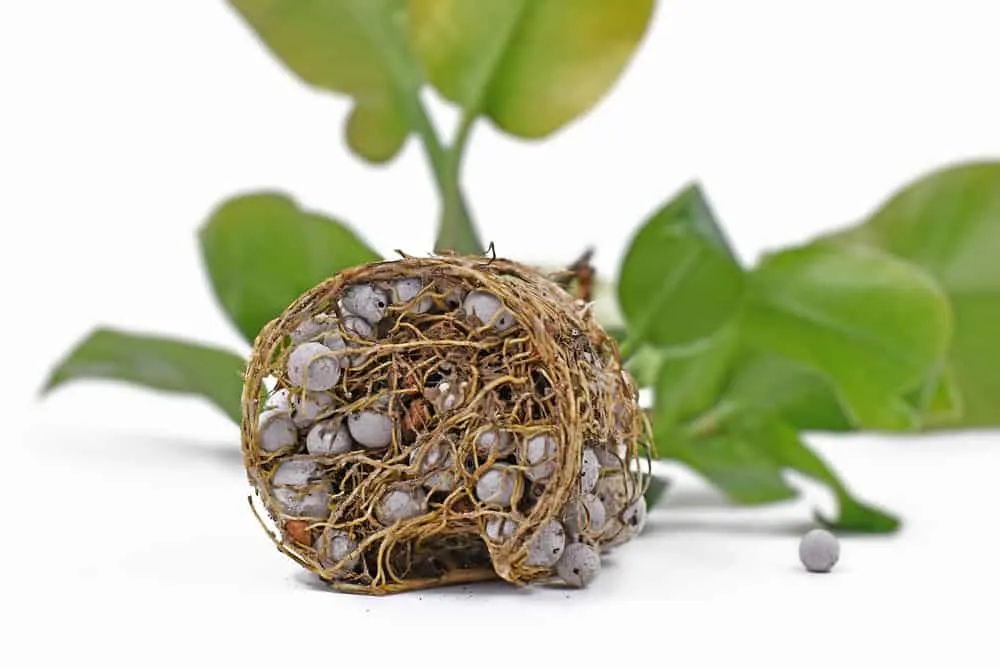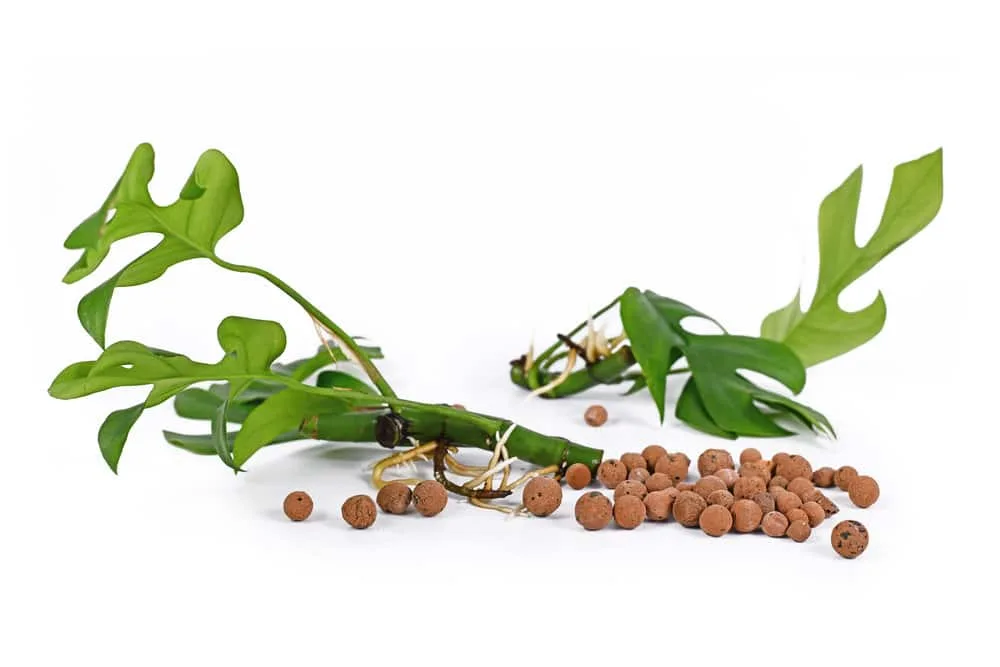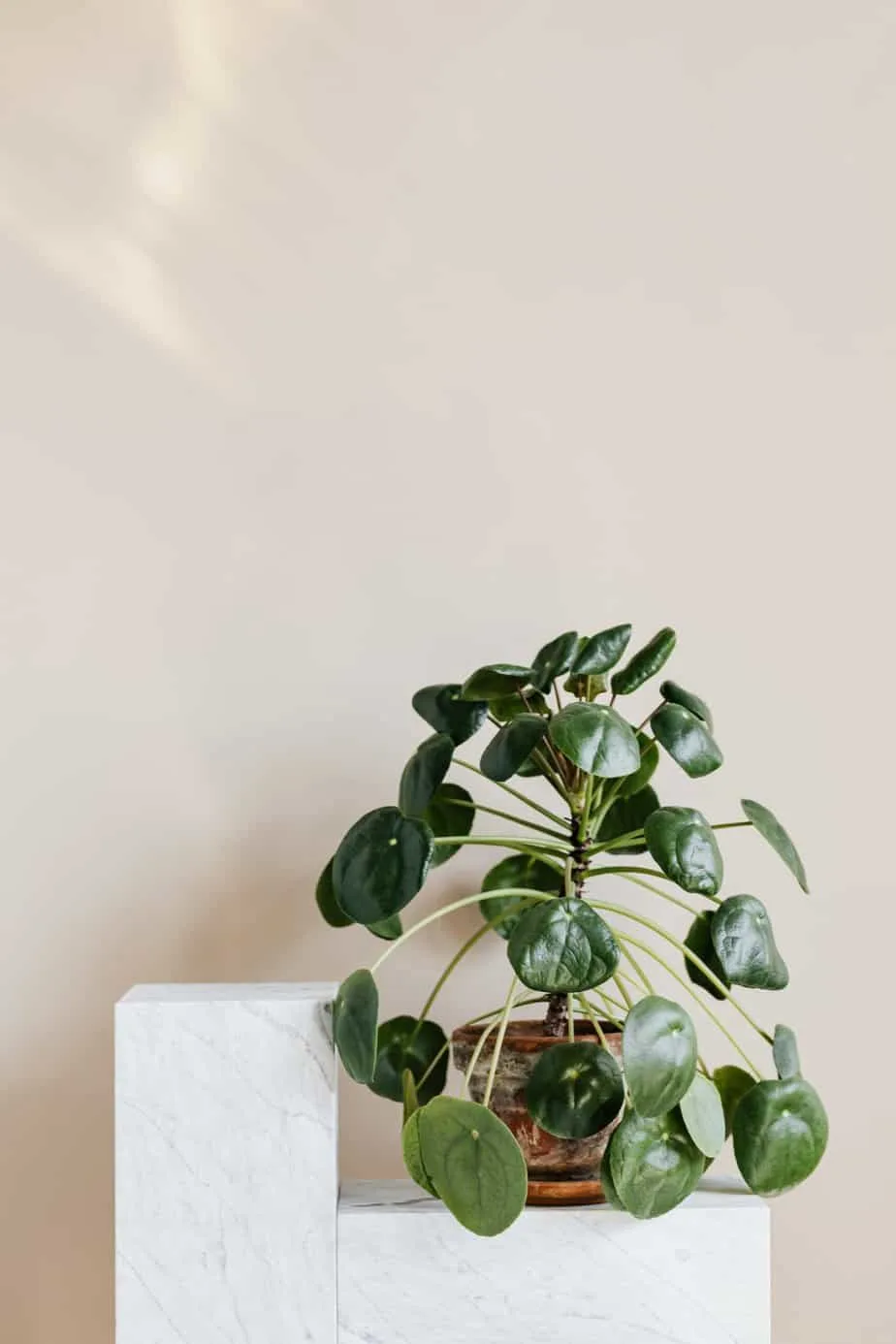Ditch the dirt and join the trend of using Lightweight Expanded Clay Aggregate, more commonly known as LECA, for growing houseplants. This method uses specially designed clay balls to provide a stable and supportive base for plant roots.

this post contains affiliate links
Growing indoor plants in LECA offers gardeners several benefits, including better oxygen availability to the roots, decreased pest risk and easier water and nutrient management. This revolutionary method has a slight learning curve, but many indoor gardeners find the switch to LECA worthwhile, leading to more robust, healthier plants with vigorous root systems.
What is LECA?
LECA stands for Lightweight Expanded Clay Aggregate. It consists of small, marble-sized clay balls heated in a kiln at high temperatures. The high heat causes the clay to expand and become porous. LECA balls are lightweight and have excellent air and water retention capabilities.
Benefits of LECA
Using LECA instead of soil for growing houseplants offers many benefits. Some enhance the plant’s health, while others benefit the home gardener.
- Improved aeration: The porous structure of LECA allows for excellent airflow, which helps prevent root rot and promotes healthy root growth.
- Water retention: LECA absorbs and holds water effectively, so plants need watering less often, a huge convenience for indoor gardeners.
- Reusability: The clay pebbles are long-lasting and can be cleaned and reused repeatedly.
- Pest reduction: Since LECA is not organic, plants grown in it are less likely to have pest problems.
- Cleanliness: Using LECA means there is no soil and no messy dirt inside the house.
Choosing the right plants
Choose the right plants and give them proper care, and LECA can be an outstanding medium for a vibrant indoor garden. Go for plants that love a well-draining, inert environment when beginning LECA gardening.
Houseplants like philodendrons, anthuriums and orchids will thrive and adapt quickly to LECA. It’s also perfect for growing an indoor herb garden that bursts with life. Herbs such as mint, parsley and basil will grow well in the exceptional aeration and moisture LECA offers.
Succulents and cacti, on the other hand, may not be ideal. These desert dwellers have a preference for drier conditions.
I like growing plants in LECA because it is great to help avoid overwatering. I also love that pests don’t like LECA like they like soil.

Planting technique
Successfully growing plants in LECA depends on two key actions. First, prepare the LECA, and second, carefully transplant the plant into its new clay ball home.
Prepping for planting
Rinse the clay balls thoroughly to remove any dust and debris. Use a strainer to wash the LECA under running water until the water runs clear.
Then, soak the LECA in water for 24 hours so they are fully hydrated and ready to support plant growth. To soak, completely submerge the clay balls in a water-filled container.
Transplanting
Carefully remove the plant from its current soil, gently shaking off the excess dirt from the roots. Be gentle to avoid damaging the root system. Rinse the plant’s roots using lukewarm water to eliminate any lingering soil.
This step is essential to prevent soil from contaminating the LECA, which can lead to fungal growth. Also, trim any decaying or dead roots before replanting to encourage healthy new growth.
Pick a container suitable for hydroponics, ideally one with its own water reservoir at the bottom. Place a layer of soaked LECA at the bottom of the container, set the plant on top, and gently fill in around the roots with more LECA. Make sure the roots are well supported, and the plant is stable.
“I have a history of overwatering and drowning all my plants. Then, a friend of a friend told me that LECA would solve my plant-murdering tendencies. Now, I have over 200 plants, all thriving in LECA.”
— Eleanor Anne, Chaos Plants
Maintenance and care
Maintaining plants in LECA requires a unique mix of watering, fertilizing and health monitoring practices. These steps are crucial to keep plants thriving in the soilless medium.
Watering
Fill the container with water up to one-third of the LECA pellets’ height. Check the water level weekly and refill it as needed. Always use water at room temperature to prevent shock to the plant roots.
Initially, you may need to top-water the plant to help the roots grow downwards towards the moisture. Over time, switch to bottom watering, which encourages the roots to grow down in search of water.
Fertilizing
With no soil to provide nutrients, plants grown in LECA rely on added fertilizers. Use a balanced, liquid hydroponic fertilizer suitable for the plant species. Mix it in water and fertilize as the product directs.

Photo by Karolina Grabowska
Monitoring plant health
Observe plants regularly for early signs of trouble. Healthy roots should be firm and white. Brown or slimy roots indicate problems. Also, watch the leaves for discoloration or wilting, which could mean the plant needs nutrients.
The transition from soil to LECA can be stressful for plants, and some may experience a period of adjustment with slower growth or slight leaf loss. Be patient and provide consistent care; most plants will adapt to their new growing medium.
Summing up
Grow plants in LECA and step into the modern era of gardening, trading traditional soil for a world of perks. This revolutionary approach boosts aeration, slashes the risk of pests and makes watering easier. While the transition from soil to hydroponics will require some initial adjustment for the gardener and the plants, those who make the switch find it a rewarding, low-fuss way to keep your indoor garden flourishing.
Anne Jolly is the creator of the food blog Upstate Ramblings. She loves to cook with gadgets like an air fryer, sous vide or pressure cooker. In her free time, she enjoys hiking, reading, knitting and spending time with her three kids.
This article originally appeared on Food Drink Life.
